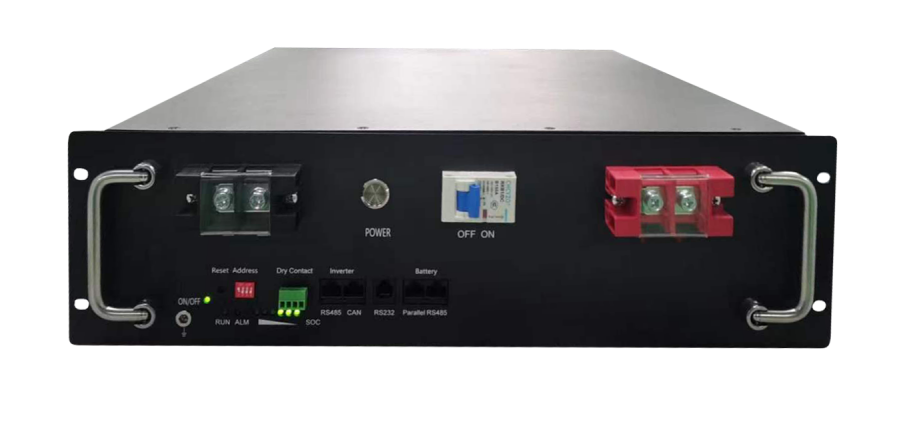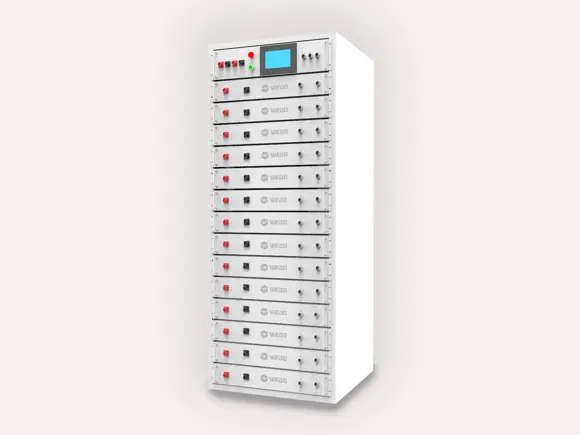Views: 0 Author: Site Editor Publish Time: 2025-08-11 Origin: Site








Do you know how long your battery will last? Understanding battery run time is essential for smartphones, vehicles, and energy systems. In this post, you'll learn how to calculate battery run time, why it's important, and factors that influence it. Get ready to optimize your energy usage!

Battery capacity, measured in mAh, Ah, or Wh, determines how long it can power your devices. Larger capacity means longer run time. To convert mAh to Ah, divide by 1000. For example, a 5000mAh battery equals 5Ah.
Formula:
Every device consumes power differently, measured in watts or amps. High-power devices drain batteries faster. To calculate power consumption:
Formula:
[ Power (W) = Voltage (V) \times Current (A) ]A 12V device drawing 2A will consume 24W.
Battery type greatly impacts run time. Common options include:
Type | Energy Density | Cost | Cycle Life |
Lead-Acid | Low (50-70Wh/kg) | Affordable | ~1000 cycles |
Lithium-Ion | High (150-250Wh/kg) | Higher cost | >1000 cycles |
Lithium-ion is ideal for portable devices, while lead-acid suits stationary systems.
Temperature affects performance. Extreme heat or cold reduces efficiency. Lithium-ion batteries work best between 20°C and 40°C, while lead-acid performs better in varied conditions.
Batteries degrade over time. Older ones lose capacity, cutting run time. Frequent charging, discharging, and exposure to heat accelerate aging.
Heavy tasks, like gaming or video editing, drain batteries quickly. Background apps also consume power. Closing unused apps helps extend run time.
Different chemistries offer unique benefits:
● Lithium Cobalt Oxide: High energy density, low safety.
● Lithium Nickel-Cobalt-Manganese Oxide: Balanced performance.
● Lithium Iron Phosphate: Safe, long-lasting.
● Lead-Acid: Reliable, lower energy density.
Internal resistance reduces efficiency, wasting energy as heat. Lithium-ion batteries have lower resistance than lead-acid, making them more efficient.
To calculate battery run time, use this formula:
[ Run\ Time\ (hours) = \frac{Battery\ Capacity\ (Ah) \times Battery\ Voltage\ (V)}{Device\ Power\ Consumption\ (W)} ]
Step-by-step explanation:
1. Find the battery capacity in amp-hours (Ah).
2. Multiply capacity by battery voltage (V).
3. Divide the result by device power consumption (W).
For example, a 12V, 10Ah battery powering a 20W device would last:
Battery capacity is often listed in milliamp-hours (mAh). Convert mAh to Ah by dividing by 1000.
Example:
● A battery rated at 5000mAh equals:
[ Ah = \frac{5000}{1000} = 5\ Ah ]Use this conversion for accurate calculations.
Real-world conditions affect battery run time. Efficiency losses, typically around 80%, reduce usable capacity. External factors like temperature and battery age also impact performance.
Adjusted Formula:
[ Adjusted\ Run\ Time = Run\ Time \times Efficiency\ (\%) ]For an 80% efficient battery:
A 12V, 10Ah battery powering a 20W device:
If the battery operates at 80% efficiency:
Cold weather reduces efficiency further, say to 70%:
● Use the formula for initial estimates.
● Remember to convert units like mAh to Ah.
● Adjust for efficiency and external factors.
Energy density determines how much energy a battery stores per kilogram.
Battery Type | Energy Density | Description |
Lead-Acid | 50-70Wh/kg | Lower density, heavier, less energy. |
Lithium-Ion | 150-250Wh/kg | Higher density, lightweight, efficient. |
Lithium-ion batteries pack more energy in less space, making them ideal for portable devices.
Cycle life measures how many times a battery can be charged and discharged before losing capacity.
Battery Type | Cycle Life | Notes |
Lead-Acid | ~1000 cycles | Shorter lifespan, frequent replacement. |
Lithium Iron Phosphate | Over 2000 cycles | Durable, long-lasting. |
Other Lithium-Ion Chemistries | >1000 cycles | Reliable, widely used. |
Lithium Iron Phosphate batteries excel in longevity, while lead-acid ones wear out faster.
Cost and performance vary significantly between battery types.
● Lead-Acid Batteries:
○ Cost: Affordable upfront.
○ Performance: Shorter run time, lower efficiency.
● Lithium-Ion Batteries:
○ Cost: Higher initial investment.
○ Performance: Longer run time, better energy efficiency, lightweight.
Although lithium-ion costs more, its superior performance offsets the price over time.
Battery recycling impacts sustainability and environmental health.
Battery Type | Recycling Benefits | Challenges |
Lead-Acid | Easy to recycle, lead content valuable. | Well-established recycling systems. |
Lithium-Ion | Emerging technologies, fewer systems. | Complex processes, limited facilities. |
Lead-acid recycling is efficient and widespread, while lithium-ion recycling requires innovation to improve.
Lowering device power usage helps extend battery run time.
Quick Tips:
● Screen Brightness: Dim your screen to save energy.
● Disable Features: Turn off Bluetooth, Wi-Fi, GPS when not needed.
● Power-Saving Modes: Use built-in modes for optimized consumption.
These small adjustments make a big difference in run time.
Proper charging habits improve battery lifespan and efficiency.
Do’s | Don’ts |
Charge between 20-80%. | Avoid full charge or 0%. |
Use recommended chargers. | Skip cheap or unverified ones. |
Keep charging cycles steady. | Avoid frequent deep discharges. |
For lithium-ion batteries, keeping charge levels between 20% and 80% prevents stress and extends run time.
Temperature plays a crucial role in battery performance.
Best Practices:
● Operate batteries in moderate temperatures (20-25°C).
● Avoid extreme heat—it accelerates wear.
● Protect batteries from freezing temperatures, which reduce capacity.
Keep batteries in a stable environment for optimal efficiency.
Lead-acid batteries need consistent care to perform well.
Battery Type | Maintenance Steps |
Semi-Sealed Batteries | Check electrolyte levels. Add distilled water when low. |
Valve-Regulated Batteries | Ensure proper sealing, avoid exposure to moisture. |
Regular checks prevent damage and keep lead-acid batteries running longer.
Battery Management Systems (BMS) improve safety and efficiency, especially for lithium-ion batteries.
Why Use BMS:
● Prevent overcharging and over-discharging.
● Avoid thermal runaway, a dangerous overheating condition.
● Monitor battery health and maintain balance across cells.
Investing in a reliable BMS protects your battery and maximizes its run time.

Automotive batteries power vehicles by delivering quick bursts of energy.
Key Features | Battery Type |
Instantaneous large-current discharge. | Typically lead-acid. |
Reliable in cold weather. | Heavy-duty construction. |
Lead-acid batteries dominate this space due to their ability to handle high-current demands efficiently.
Energy storage systems rely on batteries to stabilize power grids and store renewable energy.
● Applications: Perfect for peak-shaving and renewable energy storage.
● Advantages: High efficiency, long cycle life, compact design.
● Applications: Cost-effective for stationary energy storage.
● Advantages: Affordable, easy recycling, proven technology.
Battery Type | Best Use Case | Key Benefit |
Lithium-Ion | Renewable energy storage. | High efficiency, lightweight. |
Lead-Acid | Stationary energy storage. | Low cost, reliable recycling. |
Both types serve different needs, depending on budget and performance requirements.
Modern gadgets demand batteries that are lightweight and long-lasting.
Device | Preferred Battery Type | Reason |
Mobile Phones | Lithium-Ion | High energy density, compact. |
Laptops | Lithium-Ion | Longer run time, fast charging. |
Wearable Devices | Lithium-Ion | Lightweight, efficient. |
Lithium-ion batteries dominate consumer electronics due to their energy density and portability.
A: mAh measures current capacity; Wh reflects energy stored. Wh = mAh × Voltage ÷ 1000.
A: No, lead-acid and lithium-ion batteries require different efficiency adjustments.
A: Higher efficiency means longer run time; inefficiencies waste energy.
A: Aging causes capacity loss due to chemical degradation and electrode wear.
A: Avoid overcharging, extreme temperatures, and deep discharges; keep charge between 20-80%.
A: Lead-acid handles temperature changes better; lithium-ion struggles in extreme cold/heat.
A: Maintenance-free, sealed design prevents leaks; flexible placement options.
A: Lead-acid benefits from shallow cycles; lithium-ion tolerates them but avoids deep cycles.
Calculating battery run time requires understanding capacity, efficiency, and usage patterns. Factors like aging and temperature impact performance.
Applying practical tips—avoiding deep discharges, maintaining optimal charge levels—maximizes efficiency and extends battery lifespan.
